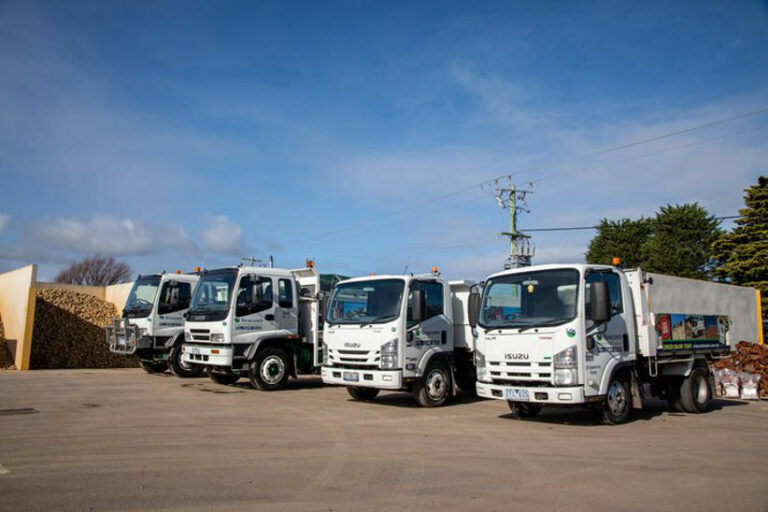The “Future of Trucking Report” by Isuzu Australia underscores the significant role that technology plays in improving safety outcomes across the trucking sector. As the industry faces increasing regulatory demands and safety challenges, fleets are progressively adopting a range of safety technologies. The report identifies safety as a top priority for operators, with technology viewed as a crucial tool for reducing risks and ensuring compliance with national safety standards.
The survey reveals that Australian fleets are integrating advanced safety systems to protect drivers, enhance road safety, and improve compliance. From collision-avoidance technologies to data-driven telematics, operators are investing in solutions that not only reduce incidents but also boost efficiency and reduce operational costs. These technologies are helping to create safer roads for drivers and other road users, aligning with broader safety and sustainability goals within the industry.
Top Safety Technologies Currently in Use
Active safety technologies are widely used by Australian fleets, with Adaptive Cruise Control, Autonomous Emergency Braking (AEB), Blind Spot Monitoring, and Electronic Stability Control (ESC) among the most adopted systems. Specifically, 44% of fleets use Adaptive Cruise Control, 43% have implemented AEB, and 41% use Blind Spot Monitoring and ESC, respectively. These technologies are designed to prevent accidents by automatically detecting and responding to potential hazards, making them critical for fleet safety.
Larger fleets and government operators are the most proactive in adopting these technologies, driven by compliance requirements and their ability to scale across multiple vehicles. For example, Lane Departure Warning, a feature that helps prevent unintentional lane changes, is employed by 51% of large fleets. This reflects a clear trend towards integrating more advanced safety features into fleet operations, particularly among larger operators who are more exposed to regulatory scrutiny.
Future Safety Technologies: What Fleets Are Considering
Looking ahead, fleets are exploring new safety technologies to further enhance driver protection and overall safety performance. The report highlights three key technologies that fleets are planning to adopt over the next 1-5 years: Lane Keep Assist, Blind Spot Monitoring, and ESC. These systems rank highest in terms of future investment, with 52% of fleets indicating interest in Lane Keep Assist, 52% in Blind Spot Monitoring, and 52% in ESC.
The report also notes that the increased focus on ESC is partly due to upcoming regulatory requirements. Under the Australian Design Rules, ESC will become mandatory for all medium and heavy goods vehicles from February 2025, reinforcing its importance as a critical safety technology. The adoption of such features aligns with fleet operators’ broader strategies to ensure compliance while maximising safety outcomes.
Telematics and Data-Driven Safety
Telematics systems play a vital role in enhancing fleet safety by providing real-time data on vehicle performance, driver behaviour, and road conditions. According to the report, 40% of fleets currently use telematics for vehicle tracking, while 34% use it for performance and predictive maintenance. These systems offer benefits like improved driver safety (57%), monitoring driver behaviour (54%), and increasing operational efficiency (53%), making them an essential tool for fleet management.
Data from telematics not only helps fleet managers identify risky driving behaviours but also supports proactive maintenance planning, reducing the likelihood of breakdowns that can compromise safety. For example, predictive maintenance features can identify potential mechanical issues before they become critical, allowing operators to address them during routine checks rather than on the road. This approach not only improves safety but also reduces downtime and costs.
Improving Driver Safety and Behaviour
Fleet operators are using technology not only to enhance vehicle safety but also to improve driver behaviour. The report highlights that driver communication systems, including in-cab messaging and alerts, are employed by 45% of fleets to provide real-time feedback to drivers. These systems help reinforce safe driving practices, reduce distractions, and promote compliance with safety protocols.
Additionally, digital mirrors, forward and rear-facing cameras, and driver monitoring systems are being widely considered for adoption in the coming years. Forward and rear-facing cameras are already used by 51% of fleets, helping to document incidents and provide clear evidence in case of accidents. Meanwhile, digital mirrors, which offer improved visibility and eliminate blind spots, are viewed as a future technology with strong potential to enhance safety outcomes.
Technology Adoption Across Different Fleet Types
The report reveals that larger fleets, such as national operators and government fleets, are more likely to adopt advanced safety technologies compared to smaller operators. This is driven by compliance requirements, the scale of operations, and the need to protect a larger number of drivers. For example, 59% of government operators are considering telematics for performance monitoring and predictive maintenance, compared to 40% across all fleets. Similarly, larger fleets are more likely to integrate advanced driver assistance systems (ADAS) due to the higher volume of vehicles and greater exposure to regulatory requirements.
However, the report also identifies challenges in technology adoption, particularly among smaller operators who may face cost barriers or lack the resources to implement complex systems. To address these gaps, industry stakeholders and OEMs are encouraged to offer more accessible and cost-effective solutions tailored to smaller fleets, ensuring that safety benefits are evenly distributed across the sector.
The Road Ahead: Building a Safer Future with Technology
The adoption of safety technologies is set to increase as fleet operators recognise the benefits of proactive safety measures and compliance with upcoming regulations. The report emphasises the need for continuous innovation and collaboration between OEMs, government bodies, and fleet operators to drive technology adoption further. By investing in advanced safety systems, fleets can not only protect drivers and other road users but also enhance operational efficiency and reduce costs.
The trucking industry’s focus on technology-driven safety is part of a broader shift towards creating safer roads, improving driver well-being, and supporting the transition to a more sustainable and compliant future. As the industry continues to evolve, the integration of safety technologies will be crucial for maintaining high standards of safety and efficiency across fleets of all sizes.






